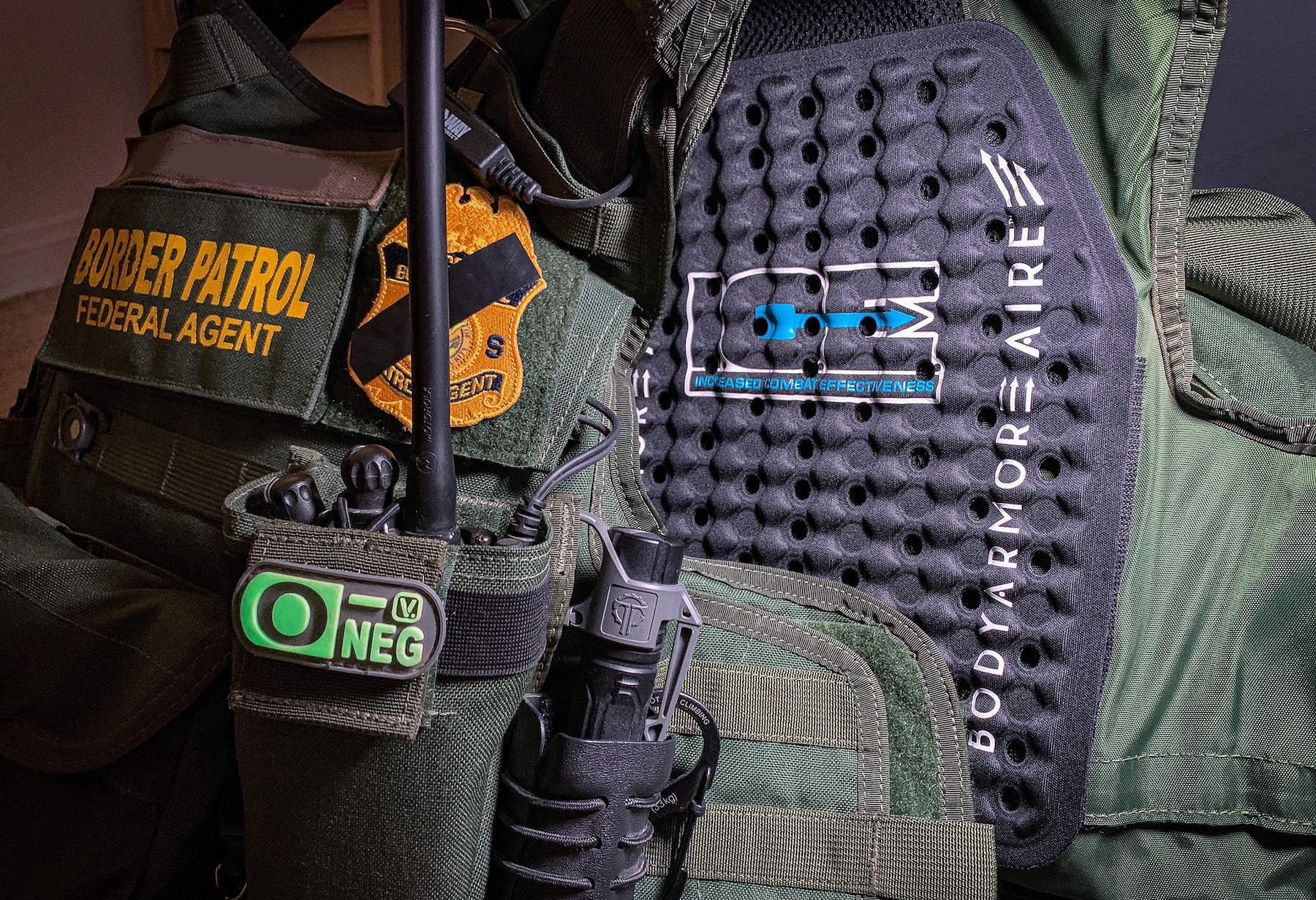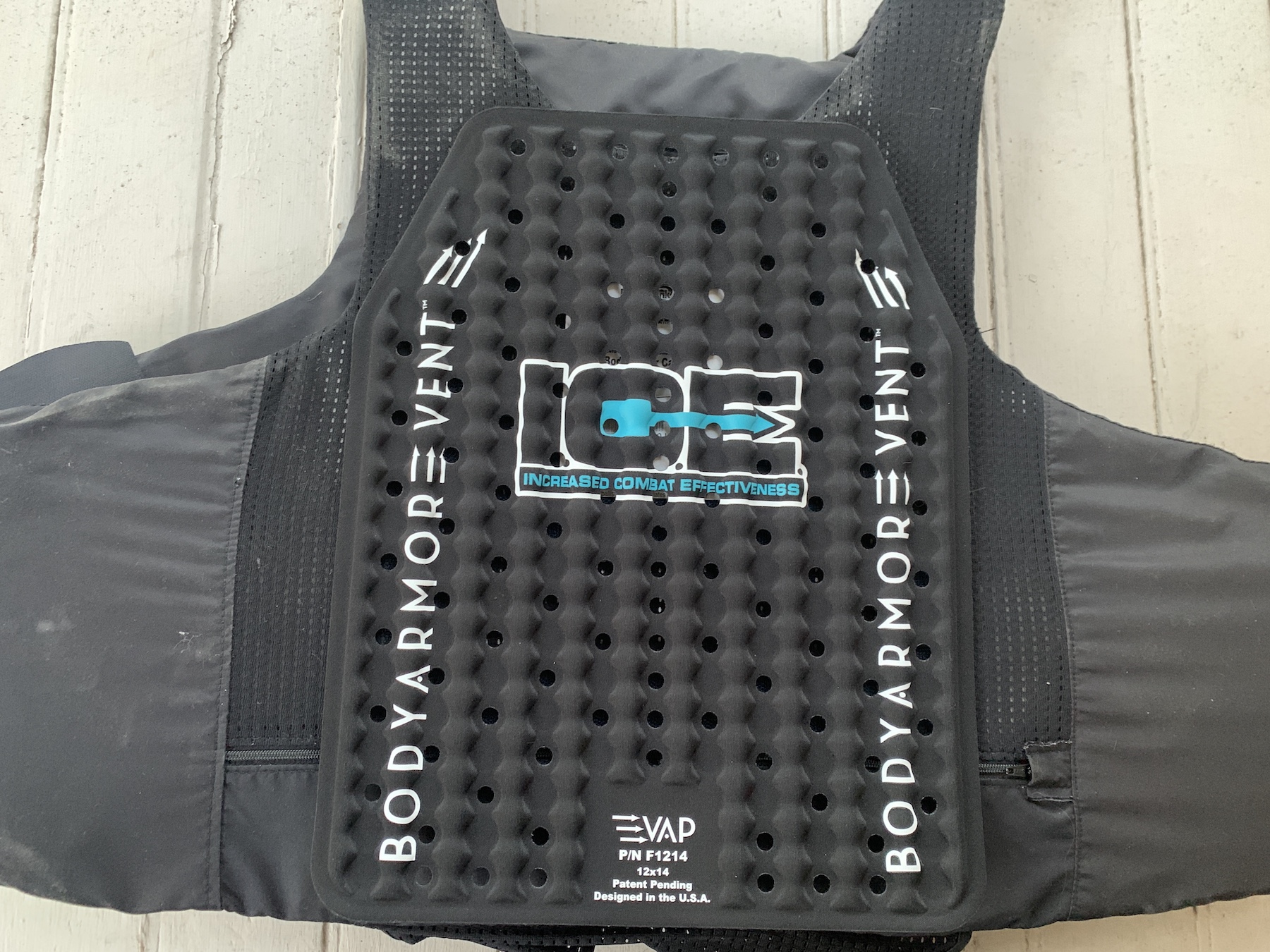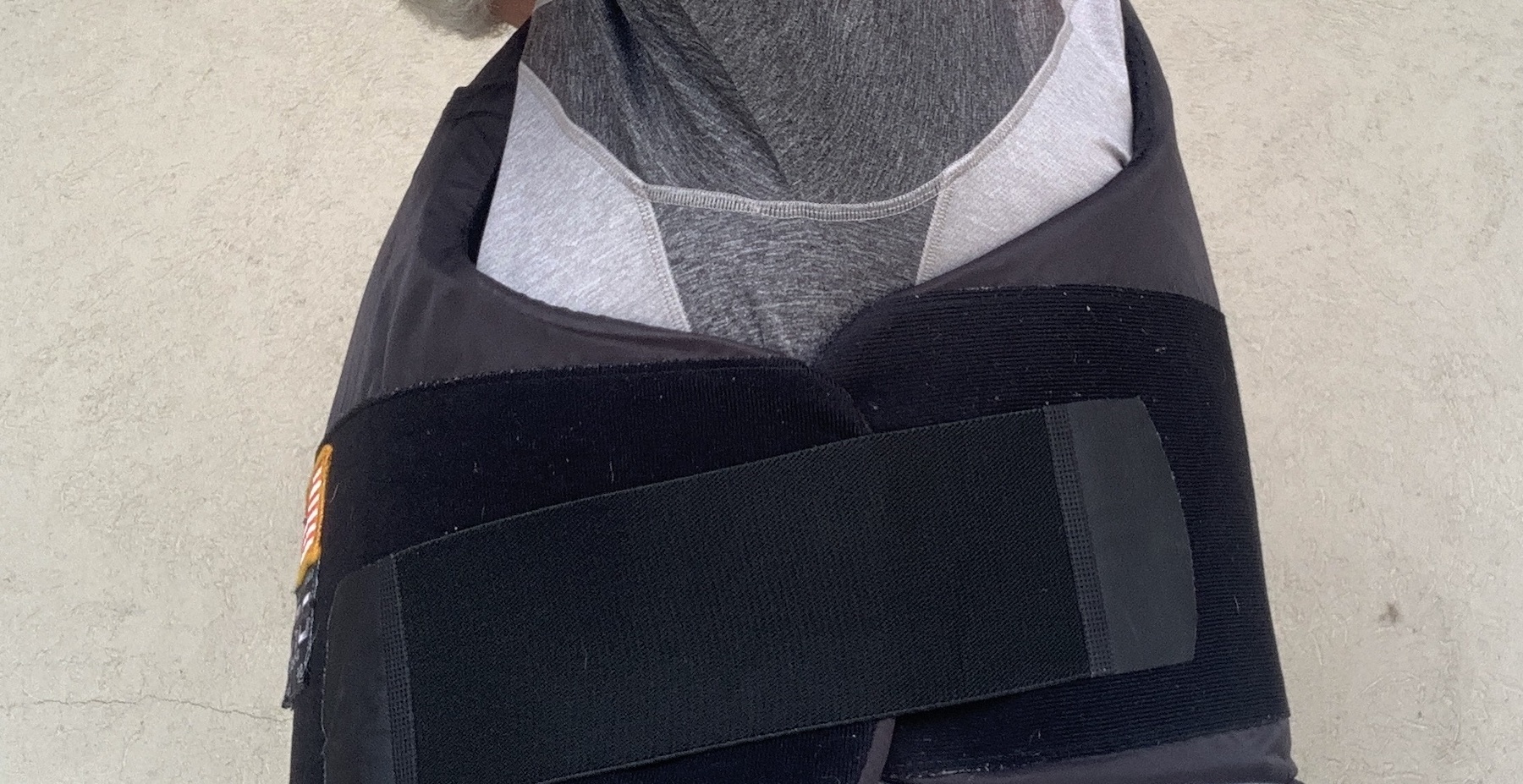
feature223952517_4570112469665800_5102596184478694147_n
Nobody, well almost nobody, likes wearing armor when it’s hot (or even a little warm). Yet, for those in law enforcement, the military, and sadly both the fire service and EMS, along with some in other professions, must wear it.
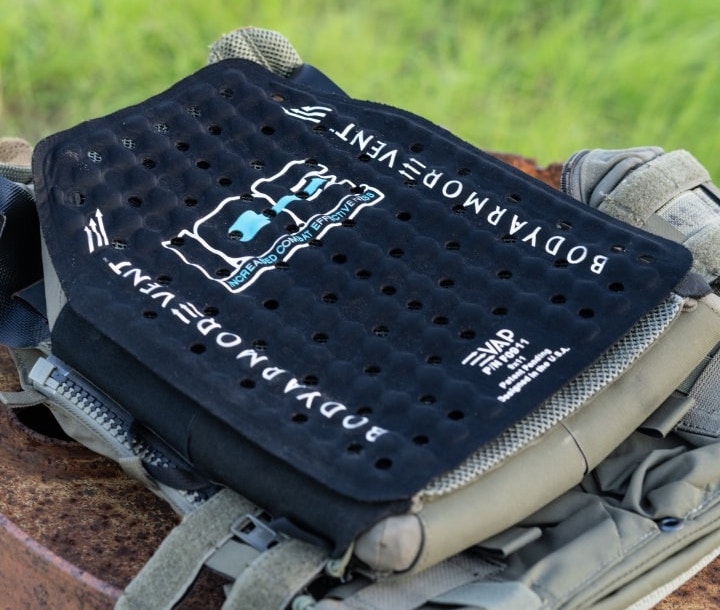
The I.C.E. EVAP panels are similar in shape and size to the rifle-rated plates many of us are used to wearing (photo courtesy of BAV).
While the armor companies have a vested interest (pun intended) in making armor as comfortable as possible, there is only so much they can do.
These days, I only wear armor when the class I’m teaching or the range I am at requires it. After having to wear it regularly for nearly all of the last forty years, I’m a bit sensitive to the discomfort of wearing it.
Over that time, I have seen several options for addressing the comfort issue. My all-time favorite was the wide-diameter hose that ran from my vehicle’s air conditioning vent at one end to a J-shaped end piece at the other end. It dropped over the top of the vest’s front panel to cool off your torso beneath the vest.
Anyway, back to today’s vests.
At SHOT this year, one of the companies I spoke with in the law enforcement section claimed they had a fix. They had a product that would increase one’s comfort when wearing body armor.
You, sir, had my attention.
Development
The principals are Tony Patton (related to that Patton), a medically retired deputy sheriff, and Erick Thielen. If you noticed that Thielen and I spell our first name the same way, that’s just a coincidence. However, I must confess that his dad and I shot USPSA-like matches in the 90s, and we’ve crossed paths the last few years in regional training circles. I did not know about this connection when I met Erick at SHOT and spoke with him about the product – Body Armor Vent’s I.C.E. EVAP system.
During physical therapy sessions, Tony identified the discomfort caused by wearing soft armor daily. And this led to the product’s development.
Design
The I.C.E. EVAP is a pair of panels similar in shape and size to rifle-rated plates. That sizing goes from Small at 8.5″ x10.2″ up to XL measuring 11.4″ x14.6″.
At their thickest, the panels are about a half-inch deep. They look like a piece of corrugated roofing material with ventilation holes. Those holes and the shape combine to create and increase airflow between the wearer and the vest just by your inhaling and exhaling. That action is sufficient to move the vest and the panels in and out. The movement generates the airflow, creating the cooling effect by setting up the opportunity for evaporation.
While I have an external armor carrier – it holds both soft armor panels and plates – I am wearing concealable soft armor much more often.
Assembly
I decided the install the I.C.E. EVAP panels on the concealed carrier. The first task was to attach the hook and loop tape (think velcro) strips that came with the second-generation retrofit kit.
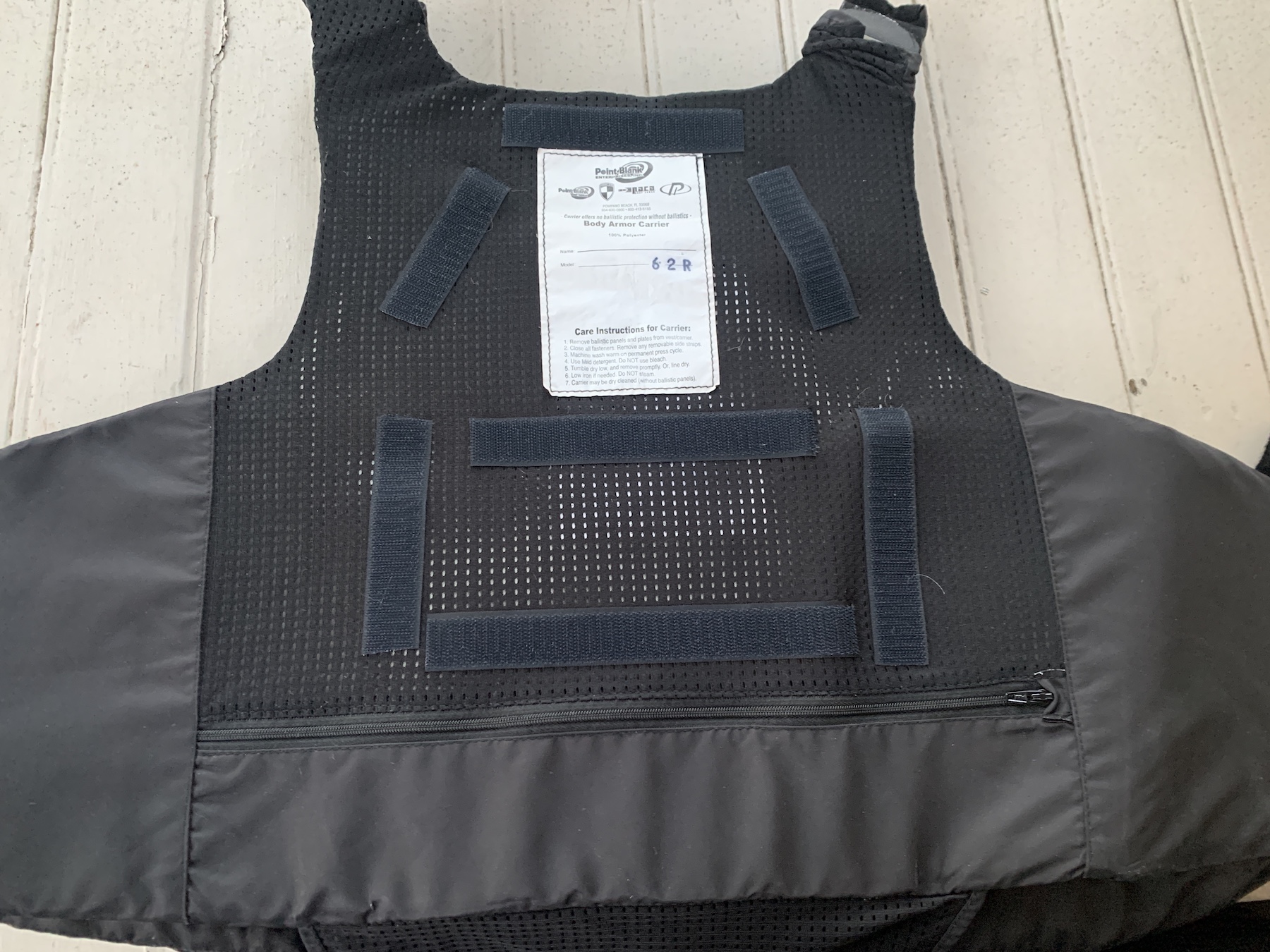
The hook tape (ok, velcro) in place – vertical, horizontal, & angled – inside a clean carrier before the panel is attached.
Those strips were cut into smaller pieces and attached to the body side of a freshly washed carrier. After laying the carrier flat and weighing it down, I let it sit for several hours. I re-inserted the panels into the carrier. Then I attached the I.C.E. panels and let them sit for over 24 hours.
BAV’s website includes a detailed video on attaching the I.C.E. panels to your armor.
Fit
Later, I put the whole thing on and re-adjusted the straps. The I.C.E. pads’ thickness will add some girth once they’re on your upper body. As a result, I had to adjust the position of the straps on the outside of my vest. Not a big deal.
With the EVAP panels inside the carrier, the vest still fits me and fits under my uniform shirt.
I wore this for several months while working court security and during range sessions. It does work. I found a subjective increase in my comfort while using the EVAP panels.
The EVAP panels worked regardless of the type of undershirt I wore – all cotton or synthetic moisture-wicking.
While the first-generation version required a bulb air pump, the current models (gen 2) use foam in the panels.
Additionally, the panels provide a level of buoyancy in the event of unplanned interactions with bodies of water.
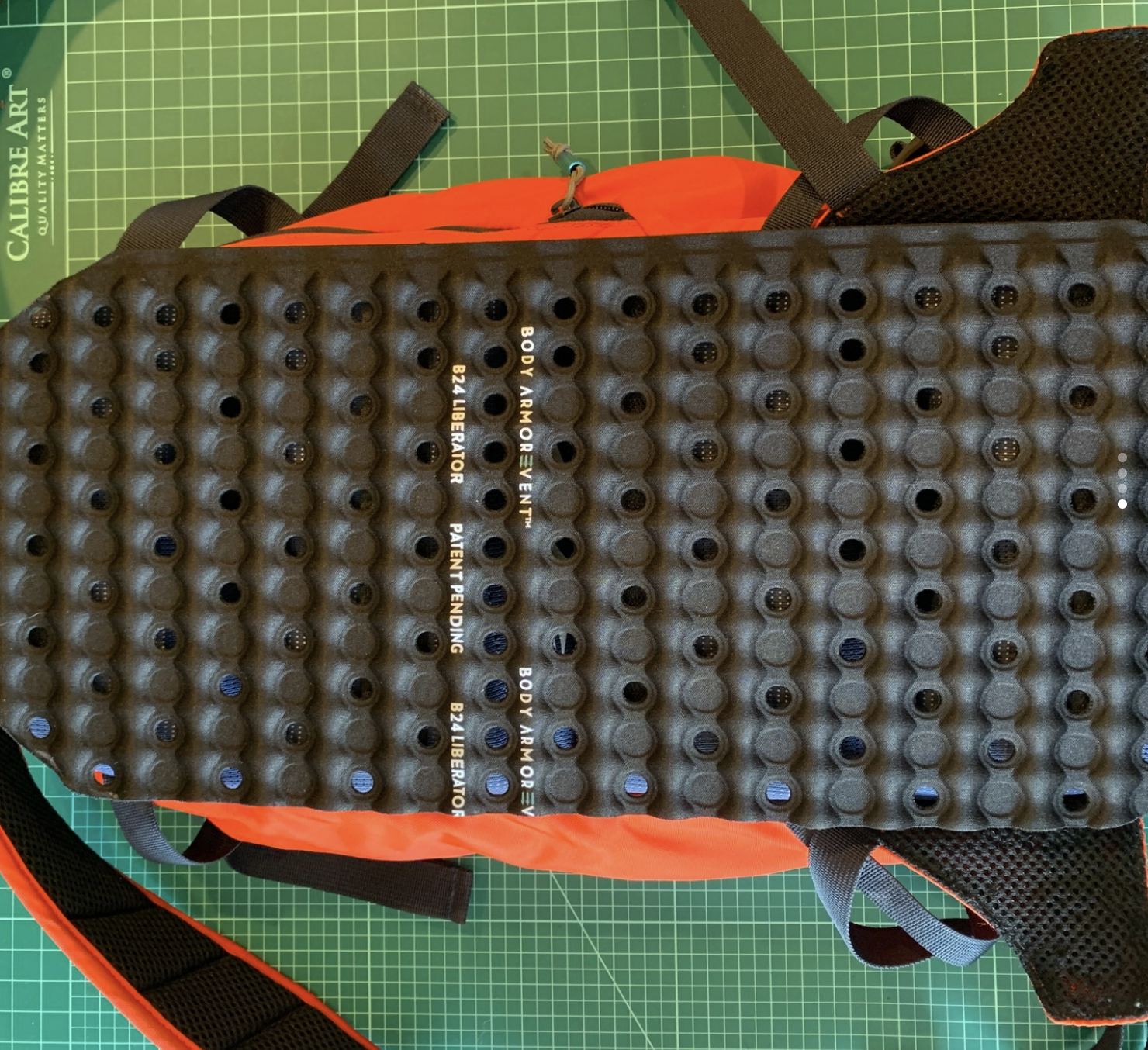
BAV makes panels that can be cut to fit different pieces of gear, like backpacks (photo courtesy of BAV)
Not only does Body Armor Vent makes retrofit kits for concealed and external armor carriers, but they also make EVAP panels for backpacks and any other similar equipment that would be worn close to the human torso.
Final Thought?
The best endorsement I can give? I’m going to buy a set for my other armor carrier.
RESOURCE:

